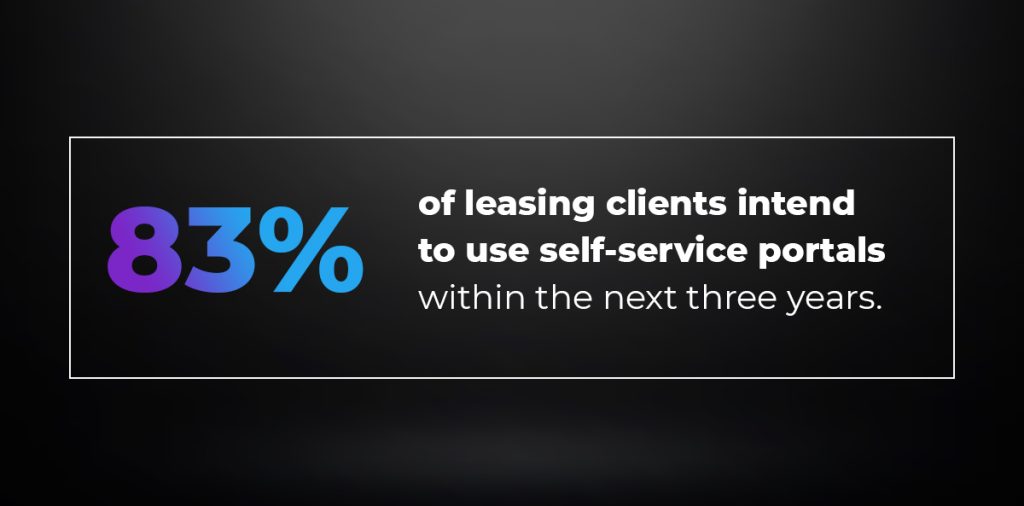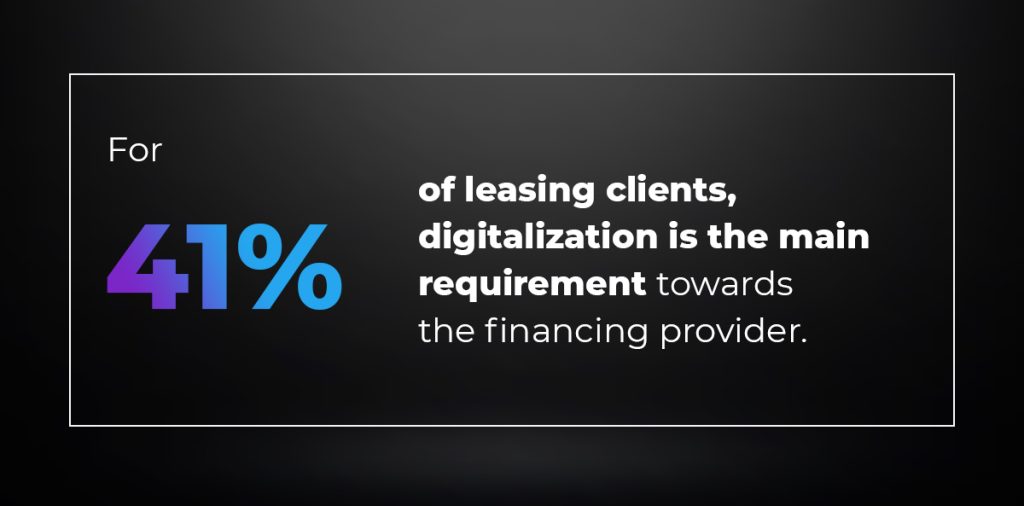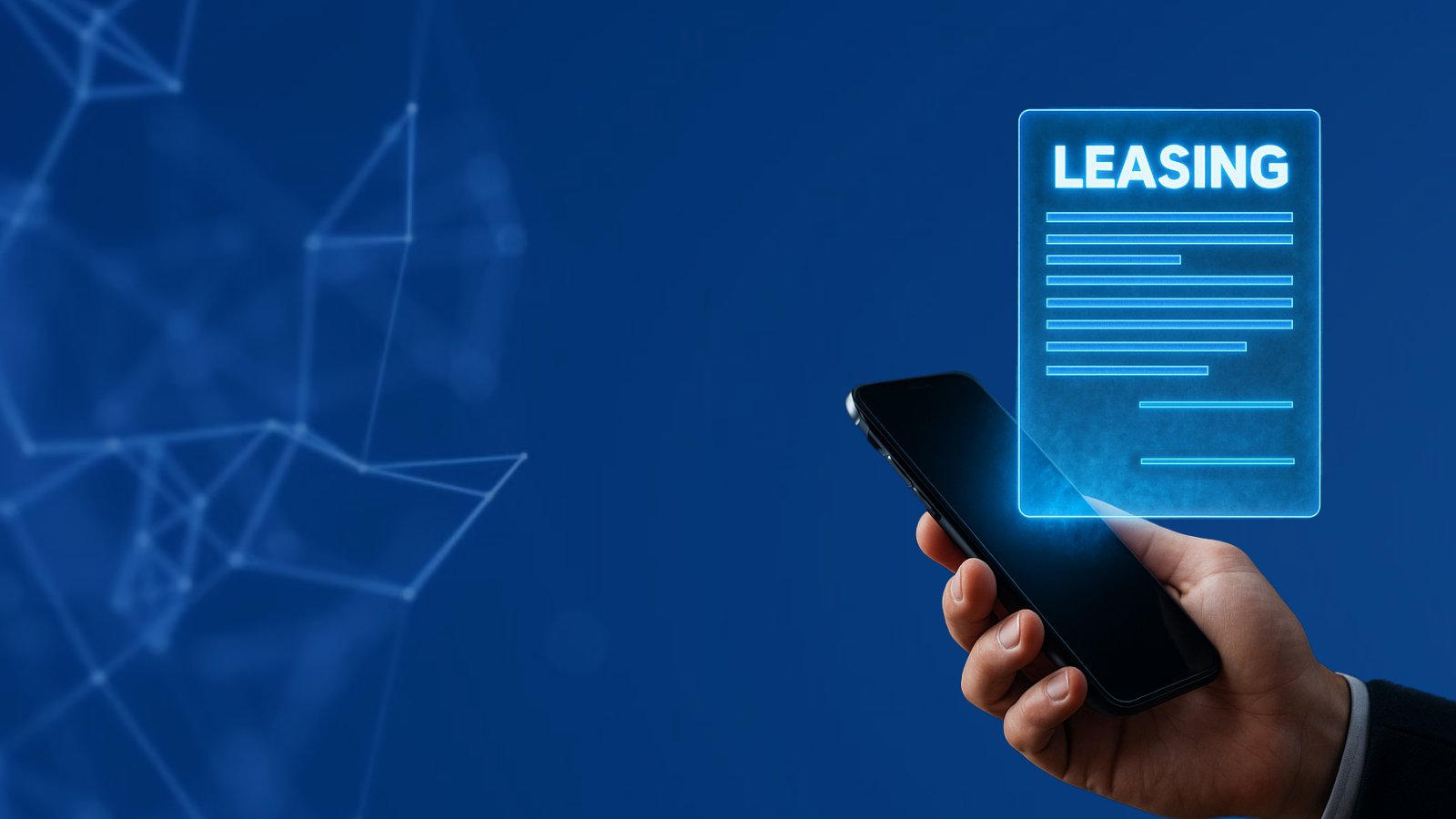Imagine a world where leasing is no different from other modern services – it’s fast, intuitive, and available online at any time. Meanwhile, in reality, leasing still operates at the pace of paper documents, phone calls, and meetings. While customers expect the digital solutions they experience in banking or e-commerce, the leasing industry is still on the sidelines of the digital revolution. Is it time for leasing to move from analog schemes to a modern, end-to-end digital service?
A foretaste of digital leasing
Imagine you need a new delivery van for your business. You sit down with your phone in hand, ready to browse through offers from various manufacturers, choose the right lease option, make a down payment, and sign the contract online. After all, in today’s world, almost anything – from purchasing groceries to securing a mortgage – can be done with just a few clicks. But leasing? This is where the story gets a little different.
You choose a vehicle and even calculate the installment amount in the available calculator, but further… you’re asked to leave your phone number and e-mail address so an advisor can contact you to present an offer. Then, you get phone calls (always at the least opportune moment), exchange e-mails and PDFs. To get things done, you must print, sign, scan, and send back the documents. And finally, meet in person with an advisor for a final in-person signing. Along the way, you repeatedly wonder why such an obvious service as leasing still needs to work fully online like most other industries. Its analog nature is the primary reason for taking a more thorough look at current leasing conditions.

Analog legacy
The leasing industry seems somewhat of a relic of the pre-digital era, when face-to-face meetings and physical signatures were the norm. Today, however, nearly every sector has undergone a digital revolution, offering customers convenience and time savings. While banks have shifted to providing complete services online and e-commerce has revolutionized shopping – enabling grocery deliveries right to client’s doorstep – leasing still clings to outdated practices. This adherence to an analog legacy will hinder its future growth and competitiveness in an increasingly digital world.
Why does leasing remain so resistant to digital change?
The leasing industry’s resistance to digital solutions stems from persistent beliefs akin to myths that limit progress. Here are three key examples:
- “Clients prefer to talk to an advisor” – there’s a strong belief that personal interaction with an advisor is essential for building relationships. However, customers are increasingly seeking the convenience of online options, preferring to avoid phone calls, in-person meetings, or lengthy e-mail exchanges to explain their needs.
- “Leasing doesn’t need a revolution if it works” – the growth of the leasing market is often seen as proof that change isn’t needed. However, what succeeds today may falter tomorrow – especially as other industries elevate their digital services, affecting customer expectations.
- “The lack of resources to go digital” – this is a common belief among leasing companies, which often feel they lack the technological expertise or resources for transformation. Yet, as technology becomes more accessible, digitization is becoming more a matter of priorities and a willingness to act.
Overcoming these myths is the first step in creating a modern leasing experience that meets today’s customers’ expectations.
What do today’s leasing customers expect?
Today’s leasing customer has very different expectations than even a decade ago. In a world where everyday things – from shopping to banking – are done with a few clicks, leasing should also be simple, fast and available online. Customers no longer have the patience to wait for answers to e-mails, to meet with an advisor or to print out documents. They want something completely different – a fully digital experience that fits their lifestyle. So, what might the ideal digital leasing experience look like?
1. Intuitive leasing available for any need
Instead of calling an advisor or exchanging e-mails about an offer, customers can easily calculate a lease on their own. Whether they plan to buy through e-commerce, from a dealer, or choose custom-configured equipment, the calculation function is always at hand. The customer sets the length of the contract, the amount of the initial payment, and the extent of insurance or service – all on one screen, without having to contact an advisor.
2. Contract process – no paper, no visit, no stress
When customers find a suitable offer, they can apply for financing immediately, providing only basic information. Identity verification is completed digitally, just like with online banks, and the contract is signed electronically. No printing, no scanning, no appointments – just a few clicks, and the contract is ready without leaving the office.
3. Full control over the contract and the leased object
Once the contract is signed, the customer can access a state-of-the-art portal that serves as the central hub for managing the lease. Here, they will find everything related to the financed asset – from contract details and service history to insurance documents and all digital records of the asset’s life cycle. The app provides reminders for upcoming payments and inspections, and when assistance is needed, support is easily accessible and ad-free – focusing solely on what is truly useful.
4. Freedom to make changes and adapt the agreement
The modern leasing model prioritizes flexibility. Customers can log in at any time to adjust the terms – adding services, extending insurance, or modifying the repayment schedule. If an additional fuel card is needed or the lease term requires extending, it’s all achievable without paperwork, phone calls, or e-mails.
5. Personalized notifications and reports
Modern customers appreciate proactivity. They don’t need to remember service appointments, insurance renewals, or depleting mileage limits – the leasing app reminds them of everything automatically. In addition, the portal offers detailed reports on usage, operations and even carbon footprint – it’s an ideal solution for companies managing a fleet or fleet of machines that want to control costs and efficiency better.
6. Access top-tier digital service conveniently at your fingertips
Leasing customers expect to get things done quickly and efficiently. The portal and mobile app provide that opportunity, but the service should work seamlessly across all channels if contact with a consultant is needed. Customers can switch between the app, chat, phone, or video call, and each consultant has the entire case context without repeating the same information.
7. Availability of personalized offers and benefits
A modern leasing customer portal is more than just a contract management tool; it’s a hub for personalized offers and benefits. Customers can access preferential terms for additional items, service packages, insurance, and fuel cards. This approach fosters a closer relationship between the leasing company and the client, transforming their interaction into a true partnership.

With such functionalities, leasing becomes a natural, convenient part of the customer’s daily life. It’s an experience where the customer doesn’t think about “paperwork” and formalities but simply uses the service like any other modern solution available online. Such a model not only meets customer needs but also builds customer loyalty, making leasing a flexible, convenient tool to support business growth.
The future of leasing – digital transformation on the horizon
Imagine leasing in 2030 – a dynamic, fully digital ecosystem where customers can seamlessly manage the financing and use of their assets. Every interaction is as simplified, automated, and customized as possible. What might await us in the near future?
1. Digital leasing assistant powered by artificial intelligence
In the future, leasing will become a service strongly supported by artificial intelligence algorithms, where a digital assistant guides customers at every stage of asset utilization. This assistant will not only remind customers of important dates but will also proactively suggest adjustments – such as contract extensions, equipment upgrades, or additional maintenance services. By leveraging data analysis, the AI-powered assistant will offer personalized recommendations, ensuring customers maximize the efficiency of their assets.
2. Full integration with the Internet of Things (IoT) and automated asset management
Advanced IoT technology will enable constant monitoring of leased assets, allowing them to respond promptly to operational needs. Connected to a network, these assets will have their technical condition monitored in real-time, with the system predicting failures, planning maintenance, and recommending optimal component replacement times. Fleet management will become automated, streamlining activities, reducing costs, and minimizing downtime.
3. Sharing and fractional leasing models – leasing as an “on-demand” service
The future of leasing will emphasize flexibility in asset access. With fractional leasing and sharing models, customers can jointly utilize expensive machinery or fleets, lowering costs. Leasing will become available “on-demand”, allowing companies to access equipment for a few months or a single season without long-term contracts. Customers will be able to lease flexibly, like a subscription, selecting resources in real time to meet their current needs.
4. Dynamic funding limits
Advanced algorithms will analyze assets’ financial performance and usage history, enabling the platform to adjust terms for subsequent lease offers immediately. Dynamically calculated financing limits will be available at the click of a button, allowing customers to instantly access financing for new assets when it matters most for their business.
5. Value-added services (VAS) ecosystem in leasing
Leasing platforms of the future are more than just contract management – they are a comprehensive ecosystem of services. Customers can benefit from legal advice, accounting, fleet monitoring, or carbon footprint, all in one place. A marketplace of services and products provides easy access to service providers, parts suppliers, and technology consultants. Such a space becomes an operations center that supports every aspect of the customer’s business.
6. Gamification, loyalty programs, and customer communities
Leasing of the future is also an innovative approach to customer relations. Loyalty programs, activity points, and customer communities will facilitate experience sharing and recommendations. Customers may even collaborate on joint projects, such as resource sharing. This transforms leasing into a supportive ecosystem of collaboration that fosters customer growth.

Such a future of leasing already seems within reach. It’s a vision in which leasing is transformed from a formal financing process into a complete digital service, ideally suited to the world of modern business. With automation, personalization and IoT support, leasing becomes a flexible, responsive solution that supports customers in achieving their goals and growth.
The future of leasing lies in innovation or stagnation?
The leasing industry must keep up with change. Customers expect convenient, digital solutions that allow them to save time, reduce paperwork, and increase the efficiency of asset management. If leasing wants to keep pace with these demands, it must be ready for consistent digital transformation. This is the moment for leasing to stop being just a source of financing and become a viable partner in the development of companies, offering services tailored to today’s business realities.
The future of leasing goes beyond merely digitizing existing processes; it also involves integrating new service models powered by IoT and AI data. Modern leasing platforms should work as comprehensive ecosystems, providing customers with complete control over their financed assets and the ability to tailor services to their specific needs.
By embracing these changes, leasing can not only stay competitive in the market but also lead the way in modern financial services. While a complete transformation demands significant effort, it’s essential for the industry’s future.
To support leasing providers in automating self-service processes and strengthening customer relationships, Ailleron has created the Next-Generation Leasing Customer Platform.

 Polski
Polski
 Deutsch
Deutsch






